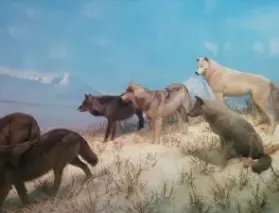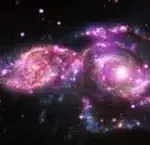 (Article is by guest writer James Jarrett. See bio below.)
(Article is by guest writer James Jarrett. See bio below.)
A gracious lady came to us
and favored us by receiving
kindly our care of her
at the end of all her days.She was a lady made graceful
beyond what we had known
by the welcome she gave to death,
her guest, whom she made unfearfulby her fearlessness, having no further
use for herself as we had known her.
– Wendell Berry(1)
As a hospice worker I am around death on a daily basis. I visit people during the last months, weeks, days, hours, and moments of their lives. Sometimes with conversation. Sometimes with ritual or spiritual practice. Sometimes with silent presence. I have watched people die. I have laid my own warm hand on cold heads in peaceful commendation. I have said prayers with grieving families gathered at the bedsides of their loved ones before the funeral home arrives. Curiously, it is during that prayer that often the tears begin to flow. People ask me, “How can you do what you do?” I reply, “I love this work” and also, “Be careful what you get good at.”
Doing this work I have learned a few things about people and spirituality and death. One thing is that most of us at the end of our lives just want to experience love and not be in pain. Another thing is that the major religious traditions of the West are largely used as defense mechanisms against the fear of death while at the same time reinforcing the fear they purport to alleviate.
Something else is that most people at the end of their lives do not seem as worried about the things you and I think we will be concerned with when our own time comes. “[T]he anxiety-laden problem of, ‘What will happen to me when I die?’ is, after all, like asking ‘What happens to my fist when I open my hand?’ or ‘Where my lap goes when I stand up?’”(2) Questions as sincere as they are unanswerable.
More than the existential dread of non-being or the elusive, “What happens next?”, most often I find people wondering, “Will my loved ones be ok when I’m gone?” Love and death go together both for those who die and for those who remain. Dying opens a liminal space where we experience the tension of not wanting our loved one to suffer at the same time as not wanting them to leave us. This is the painful space of love.
Still, for most people, there comes a point in the dying process where even these questions are silenced. Disease progression and the body shutting down render them no longer relevant. I wonder if this is Nature’s way of freeing us from the clench of conscious analysis into the liberty of simply being and of surrendering to what is; even if what comes next is our own death?
For Spiritual Naturalists, spirit is not something apart from Nature. In fact, the origins of the English word “spirit” have to do with breath. We see this connection in the word “inspiration”. When a new baby is born their first task is in fact a spiritual one: “Breathe!” The child breathes in, and then “Waaaaaaaahhh!” They breathe out with the first cry of life. Breathe in… Breathe out… (who is it that breathes?) and the life-sustaining respiratory (there it is again) process has begun.
Have you ever noticed that inhaling and exhaling always go together? What happens if you only inhale and then hold your breath? Go ahead. Try it. If we cling to the breath, it will not be long before we lose it. Possibly for good.(3) This most basic of spiritual activities: breathing continues from birth on until sometime in the future when there will be one final exhalation with no inhalation to follow. “How did you know he was gone?” “He stopped breathing.”
As much as Western medicine conditions us to fight cancer, heart disease, renal failure, COPD, and dementia as “evil”, these terminal medical diagnoses also invite us back into our bodies and out of our minds. Fluctuating levels of alertness and orientation, breathing, eating and drinking, peeing and pooping, mobility, and skin integrity become the indicators of stability and decline. Could these diseases be Nature’s gift of freedom at the end of our lives? What a mercy.
Ekhart Tolle said, “I have lived with several Zen masters—all of them cats.”(4) I too have spent time with several Zen masters. They are my patients with dementia. This similarity is worth serious, scientific inquiry.
Our journey from birth, through life, and into death is the spiritual/breath journey everyone takes. As an alternative to the death-denying bulwark of much institutional religion, some of us who embark on an intentional spiritual path do so as a practice of letting go on purpose before we do so in death. In other words, a spiritual practice can help us learn—as one old priest said—how “to die before we die.”(5)
Befriending death’s gifts of limitation, of imperfection, and of reality can help us to embrace life and ourselves as we are rather than as we wish we were. Every being is born, lives, and then dies. Then something else is born. The process of death is as natural as birth. It is both a labor and a dance of love.
Subscribe to The Spiritual Naturalist Society
Learn about Membership in the Spiritual Naturalist Society
__________
The Spiritual Naturalist Society works to spread awareness of spiritual naturalism as a way of life, develop its thought and practice, and help bring together like-minded practitioners in fellowship.
SNS strives to include diverse voices within the spectrum of naturalistic spirituality. Authors will vary in their opinions, terms, and outlook. The views of no single author therefore necessarily reflect those of all Spiritual Naturalists or of SNS.
__________
NOTES:
1) Wendell Berry, Sabbaths 2004, VII, Dee Rice Amyx, 1910-2004, from Given: Poems, Berkeley: Counterpoint, 2005, p. 144.
2) Alan Watts, The Way of Zen, New York: Pantheon, 1957
3) Alan Watts is fond of breath as an example of relationality.
4) Ekhart Tolle, The Power of Now, Novato: New World Library, 2010.
5) See also, http://alt-death.com/ where one of our SNS members and contributors, Tony Wolf teaches and facilitates intentional ritual around the theme, memento mori ergo carpe diem (remember death and therefore seize the day). Tony is currently teaching online courses via Morbid Anatomy on the subject of innovations in funeral, memorial and memento mori ritual. To learn more, visit: https://alt-death.com/2022/02/15/the-art-of-ritual-changing-ways-of-life-and-death-april-may-2022/.
Bio: James Jarrett lives with his partner Katie in the Dallas-Fort Worth area. They have six children. A licensed attorney and former church planter, James is endorsed by The Humanist Society as a Chaplain and Celebrant supporting people full-time in Hospice care. He posts poetry, articles, and random thoughts on his blog Becoming Human. (https://becominghuman122.wordpress.com/)












